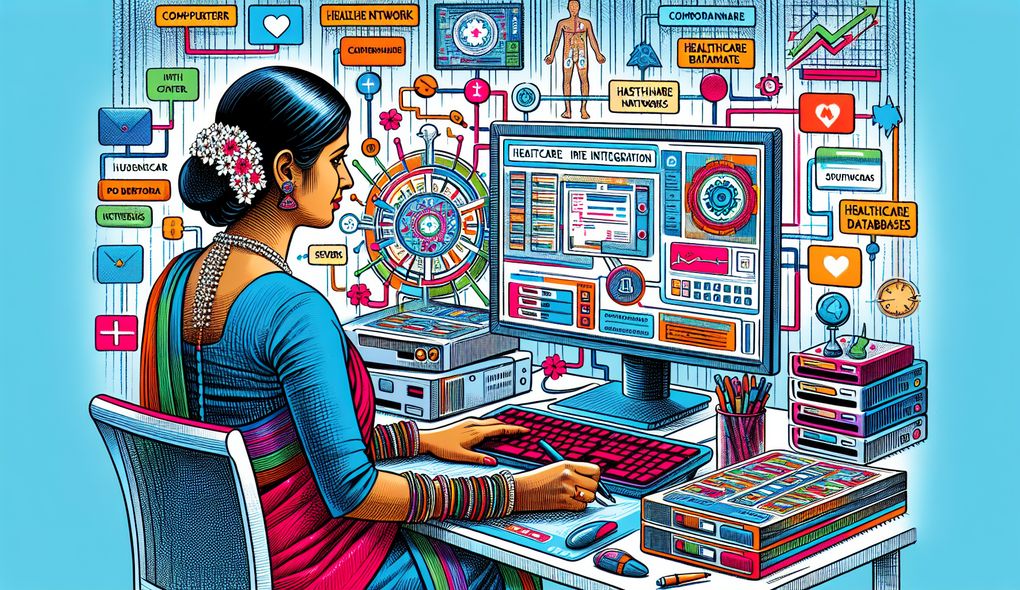What responsibilities have you had in implementing healthcare IT integration solutions?
JUNIOR LEVEL

Sample answer to the question:
In my previous role, I had the responsibility of implementing healthcare IT integration solutions. I worked closely with the IT team and healthcare professionals to understand their integration requirements. I was involved in the configuration and testing of interfaces between different healthcare IT systems. I also participated in troubleshooting and resolving integration issues. Additionally, I documented the integration processes and configurations to ensure that they were well-documented for future reference. I monitored the integration systems to ensure efficient data flow between healthcare applications and maintained compliance with security standards.
Here is a more solid answer:
In my previous role, I had the responsibility of implementing healthcare IT integration solutions. I worked closely with the IT team and healthcare professionals to understand their integration requirements. For example, I conducted meetings with different stakeholders to gather their input and ensure that the integration solution met their needs. I was actively involved in the configuration and testing of interfaces between different healthcare IT systems. This included mapping data elements, defining HL7 message structures, and ensuring data integrity during the integration process. Whenever there were integration issues, I collaborated with the IT team and conducted thorough troubleshooting to identify the root cause and implement appropriate solutions. To document the integration processes and configurations, I created detailed technical specifications and diagrams. This documentation not only helped in future reference but also facilitated communication between different teams involved in the integration process. Furthermore, I monitored the integration systems using monitoring tools and performed data analysis to identify areas for optimization and efficiency improvement. I ensured compliance with security standards by implementing necessary security measures and regularly auditing the integration systems.
Why is this a more solid answer?
The solid answer expands on the basic answer by providing specific details and examples to support the responsibilities of the candidate. It mentions conducting meetings to gather stakeholders' input, configuration and testing of interfaces, troubleshooting with the IT team, documentation through technical specifications and diagrams, monitoring and data analysis for optimization, and ensuring compliance with security standards. This answer demonstrates a deeper level of understanding and experience in healthcare IT integration solutions.
An example of a exceptional answer:
In my previous role, I had the responsibility of implementing healthcare IT integration solutions to streamline communication, data exchange, and operational efficiencies within medical facilities. I worked closely with the IT team and healthcare professionals to understand their integration requirements and ensure that the implemented solutions aligned with their goals. For example, when implementing an integration solution for a hospital's EHR system, I conducted interviews with various departments to identify their specific data exchange needs, such as lab results, medication orders, and patient demographics. Based on these requirements, I designed HL7 message structures and developed custom scripts to transform and map data between different systems. During the configuration and testing phase, I actively collaborated with vendors, internal IT teams, and end-users to ensure seamless integration and data integrity. I also played a crucial role in troubleshooting and resolving integration issues. For instance, when the integration between a radiology system and the main EHR system was experiencing data inconsistencies, I conducted extensive analysis of message logs and databases to identify and resolve the root cause, which turned out to be an incompatible data format. To document the integration processes and configurations, I created comprehensive technical specifications, flowcharts, and user manuals. I also conducted training sessions for stakeholders involved in the integration process to ensure seamless adoption and usage. As part of my commitment to continuous improvement, I monitored the integration systems using advanced monitoring tools and performed data analysis to identify bottlenecks, performance issues, and opportunities for enhancing the data flow and efficiency. I collaborated with cross-functional teams to implement optimization strategies, such as database indexing and interface optimization, resulting in improved response times and reduced data processing errors. To ensure compliance with security standards and regulations, I implemented encryption protocols, access controls, and regular security audits for the integration systems. Overall, my responsibilities in implementing healthcare IT integration solutions involved a strong combination of technical expertise, project management skills, and a deep understanding of healthcare workflows and data standards.
Why is this an exceptional answer?
The exceptional answer goes above and beyond the basic and solid answers by providing extensive and specific details of the candidate's responsibilities in implementing healthcare IT integration solutions. It mentions conducting interviews with various departments, designing HL7 message structures, developing custom scripts, collaborating with vendors and end-users, troubleshooting complex issues, creating comprehensive documentation and user manuals, conducting training sessions, monitoring with advanced tools, performing data analysis, implementing optimization strategies, and ensuring compliance with security standards. This answer showcases the candidate's technical proficiency, project management skills, and in-depth understanding of healthcare workflows and data standards.
How to prepare for this question:
- Familiarize yourself with healthcare IT standards such as HL7, FHIR, and DICOM.
- Gain a foundational understanding of EHR/EMR systems and their functionalities.
- Brush up on programming languages such as SQL, XML, or JavaScript.
- Develop strong analytical and problem-solving skills.
- Improve your communication and teamwork abilities.
- Practice troubleshooting integration issues by reviewing case studies and working on mock scenarios.
- Review documentation and documentation standards for healthcare IT integration solutions.
- Stay informed about the latest advancements and trends in healthcare IT integration.
- Consider pursuing additional certifications or training in healthcare IT integration.
- Prepare examples from past experiences where you successfully implemented healthcare IT integration solutions and the challenges you faced.
What are interviewers evaluating with this question?
- Technical support
- Healthcare IT systems
- Integration methodologies
- Data analysis
- Programming
- Troubleshooting
- Documentation
- Communication

